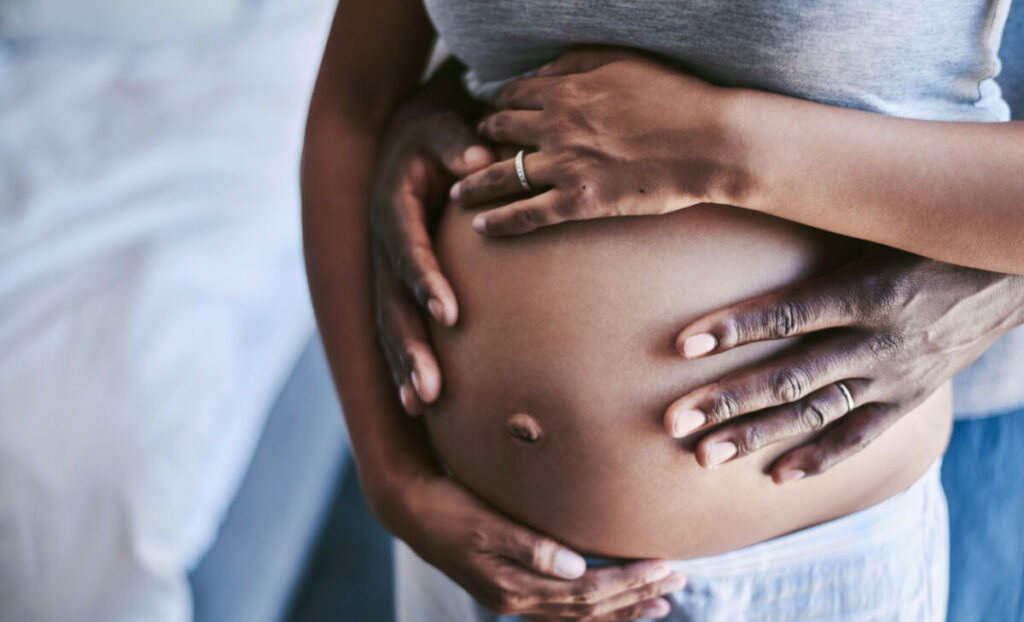Is It Safe to Get Botox for Migraines During Pregnancy?

Botox is a popular cosmetic procedure, especially among women who want to get rid of their facial wrinkles and improve the signs of aging. But beyond its aesthetic purposes, Botox treatment is also being used for therapy of chronic migraine headache disorders today. And women who experience pregnancy migraine may also consider receiving Botox for their headache pain.
But how safe is it to get Botox for chronic migraine pain during pregnancy? Botox is an FDA-approved treatment to prevent migraine, and certain studies have shown that it can also be used as a secondary migraine treatment for pregnant women. Using Botox for migraine during pregnancy is safe and poses no serious complications and should only be given by a doctor.
With just a few simple injections, our providers can erase your wrinkles and fine lines in no time with Botox. Call us today to book your appointment.
Why Pregnant Women Get Migraine Attacks
About 15% to 18% of women in the US population are considered a chronic migraine sufferer, and the frequency of a migraine attack seems to be recurrent during menstruation, menopause, and pregnancy.
To understand why episodic migraine and chronic pain are more common in women, it’s important to know about the estrogen hormone. Estrogen is known as the female hormone and it is mostly responsible for the sexual and reproductive functions of women. Throughout the course of life, estrogen levels naturally fluctuate and it can trigger headache and chronic migraine symptoms.
- Menstrual migraine – This type of migraine happens when there’s a sudden decrease in estrogen during menstruation. The most common symptoms are nausea, fatigue, and persistent throbbing pain on the head but they usually last for a few days during the period.
- Menopause – Perimenopausal women may experience severe headache symptoms as their hormones drastically drop. However, their condition typically improves as they reach the end of their natural menopause.
- Pregnancy headaches – Fortunately, not all pregnant women experience migraine headaches, with 50% to 80% of women sharing that they get fewer headache days during pregnancy. But there are isolated cases and about 15 to 20 percent of mothers-to-be can get tension headache and migraine headaches during their first trimester.
Pregnancy migraine pain may be due to the estrogen changes and increase in blood flow which causes blood vessels to expand and stimulate pain. Regular headaches on a pregnant patient can also be influenced by external factors such as:
- Dehydration – Pregnant women need to drink more cups of water since the body needs the fluid for the baby. It is recommended to consume 8 to 12 cups of water each day.
- Lack of sleep
- Weight changes
- Diet and nutrition – Foods like cheese, dairy, and chocolate can trigger headaches during pregnancy.
- Caffeine withdrawal
- Increased sensitivity to light, sounds, and smells
Safety of Botox for a Pregnant Patient

Cosmetic Botox has been around for years and many women have received botulinum toxin injections for their wrinkles and fine lines. Botox is a known neuromodulator and it acts by blocking certain chemicals from being sent between the nerves and muscles. This in turn relaxes the muscles and stops muscle contraction to improve the appearance of wrinkles in the face.
Multiple studies have discovered that Botox can work in the same way for chronic migraine prophylaxis. When a Botox injection is given to a migraine sufferer, the toxin can prevent chemicals and pain signals from being released in the brain. When there’s no pain transmission activity, a patient will stop feeling symptoms of headache and there’s a great improvement in fewer headache day frequency.
In a new 2020 study, researchers have discovered the safety and efficacy of Botox for pregnant patients suffering from chronic migraines. Here, 45 pregnant women received botulinum toxin injections for their migraine symptoms and during their treatment, no adverse reactions were experienced by women. Likewise, the injections showed no serious effects on their pregnancy outcome.
Pregnant women who want to get Botox for chronic migraine should only do so under the guidance of their physician or a headache specialist. The procedure can come with mild side effects such as neck pain, slight headache, muscle weakness, and swelling at the injection site. Most reactions after the treatment are temporary and will only last for a few days.
Read more: Differentiating Therapeutic Botox for Migraines vs Cosmetic Botox
What Botox for Migraine Treatment Looks Like
Botox is generally approved for preventive treatment of chronic migraine, which is a chronic headache that lasts for more than 15 days per month. Women who get Botox for chronic migraines before getting pregnant may continue their treatment during pregnancy as long as the injections are regulated by their doctor.
Migraine patients typically need an average of 155 units of Botox injected into their neck and head muscle areas. The procedure is fast and can be done in 15 to 20 minutes. Its results may also take at least 2 to 4 weeks to take effect. After your first treatment of Botox, your doctor may recommend getting injections every 3 months to enjoy its effects for migraine prevention.
However, not all primary headache types can be treated by Botox. There are still limited studies on the efficacy of botulinum toxin for episodic migraine, cluster headache, and tension type headache. Aside from headaches, Botox can also treat medical conditions like cervical dystonia, overactive bladder, and excessive sweating.
Learn more: What You Should Know About Treating Migraines With Botox
Other Pregnancy-Safe Ways to Treat Migraine Headache
Pregnant women should only consider Botox as a last resort for their chronic migraine. While it’s an effective treatment, it is still a neurotoxin and may have adverse effects if not administered properly. It’s best to consider pregnancy-safe options to treat migraine headaches before getting Botox:
- Take acute migraine medication – Pain relief drugs such as acetaminophen, triptan, metoclopramide. Preventive medication or beta blocker shots such as metoprolol and propranolol can also provide temporary relief from severe headaches.
- Avoid exposure to foods and smells that can trigger your headache.
- Make sure to relax and avoid stressors – Practicing light exercises like yoga and meditation and deep breathing can help put your mind at ease and keep headaches at bay.
- Try acupuncture treatments – Acupuncture can help relieve pressure from trigger points and alleviate feelings of nausea, vomiting, and severe migraines during pregnancy.
- Use hot or cold compress – Putting an ice pack or a hot pad on the back of your neck can relieve pain from tension headaches.
aNu Aesthetics: Your Partner for Safe Botox and Wellness Services
New studies today suggest the safety and efficacy of Botox for pregnant women who are also chronic migraine patients. Just keep in mind that Botox injections should be done by an experienced practitioner to maximize its effects and lessen possible risks.
Here at aNu Aesthetics, we prioritize our clients’ health and well-being in every procedure. Our doctors and clinic staff are all trained to perform safe injection treatments to help you get the most out of your Botox experience. Call us now for a consultation or inquire more about products and services.
With just a few simple injections, our providers can erase your wrinkles and fine lines in no time with Botox. Call us today to book your appointment.